Science Connections
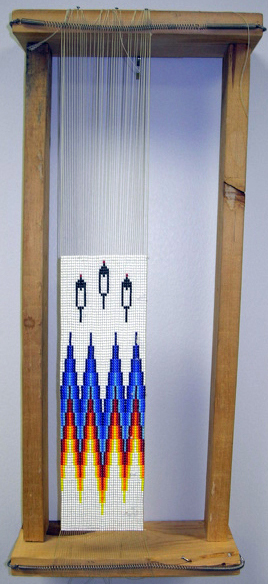
To the left is a contemporary bead loom built by teacher and beadworker, Shirley Reader (Kiowa/Navajo). The loom has a "warp" of long vertical threads. The beads are placed between the vertical strands and then threaded in the horizontal direction to hold them in place.
Below is a giant loom (used only for teaching purposes). Here we see how the beads are placed between the vertical strands or "warp". They have already been threaded once to line them up. The first horizontal thread is under the warp. Next they will have a second horizontal thread passed through them, but this time it will pass over the warp. That holds them in place. Each time we thread a new row, we can change the colors of the beads. For example, we might replace two white beads with two red beads in each row. That would create this pattern. Creating a pattern in repeating steps like this is called "iteration" in computer science. Iteration is very common: for example, walking is also iteration (raise a foot, move it forward, put it down, switch feet, repeat). Can you think of other examples?
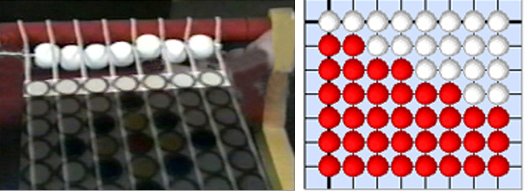
From Beads to Atoms
Beadwork can also help us think about math and science. In this image at the bottom we can see how the atomic structure of diamond looks in a Scanning Electron Microscope: the carbon atoms are lined up in a layer, like beadwork with holes in it. Of course this is just the surface, there is another layer below that, another below that, and so on.
However the carbon atoms in diamond are not just linked like beads in a single layer, they are also strongly linked between layers. Compare this to a diagram for graphite. Graphite is also made only of carbon atoms, but it is very soft because the layers of atoms are not strongly connected. That is why we use graphite for pencils: the layers slide off and stick to the paper.
But graphite is made from carbon, the same as diamonds! Why should your pencil lead be soft enough to come off onto paper, when diamond is so hard that it can cut glass? Think about bead looms if they were stacked in layers. It would be really easy to slide one layer off, which is how the graphite in your pencil arranges layers of atoms. Diamonds atoms are more like beads that are connected from all sides, so it is super hard.
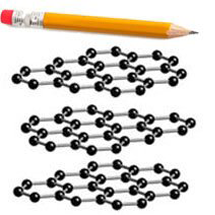

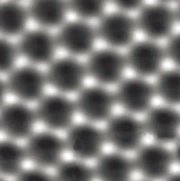
Similar hexagonal patterns appear in the atoms of graphite--the pencil "lead" that you write with.
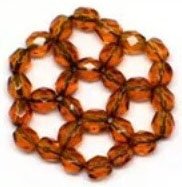
Math artist Gwen Fisher created this hexagonal pattern by "bead weaving. Instead of a loom she just loops thread directly into the beads.